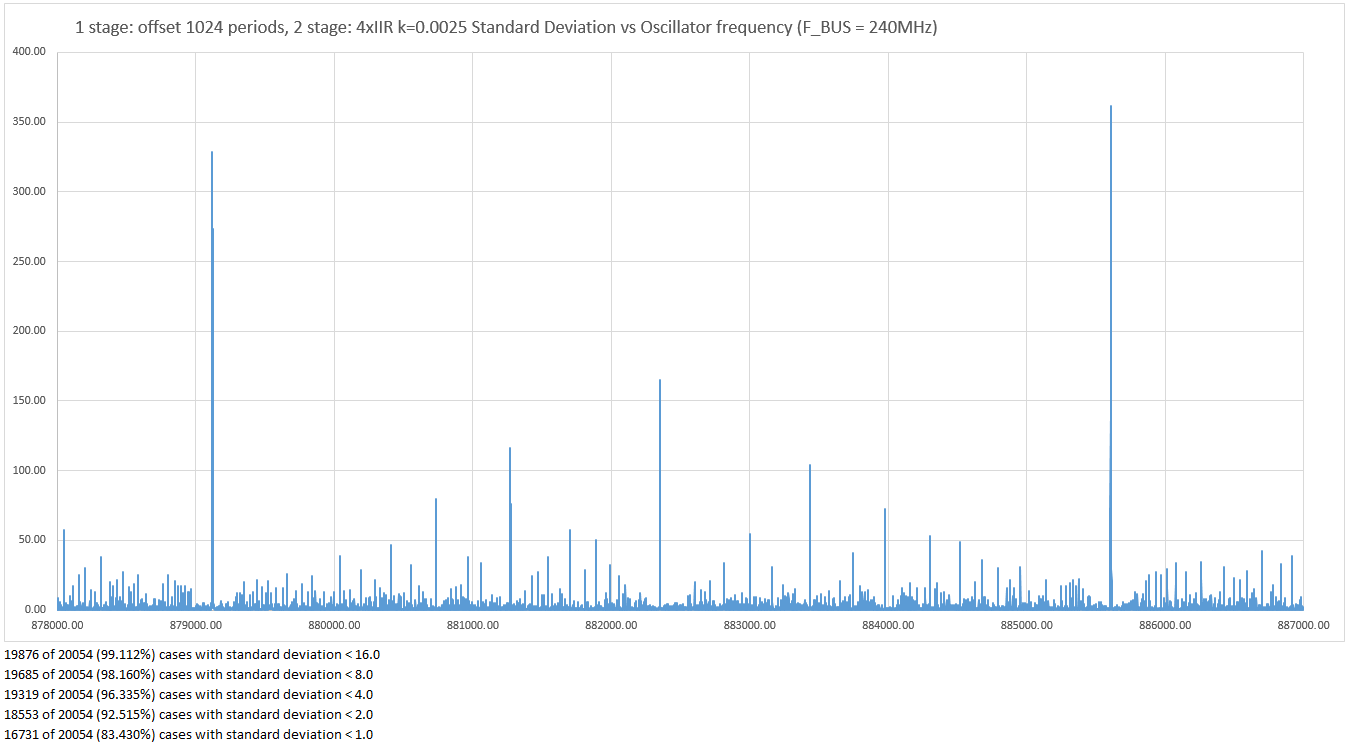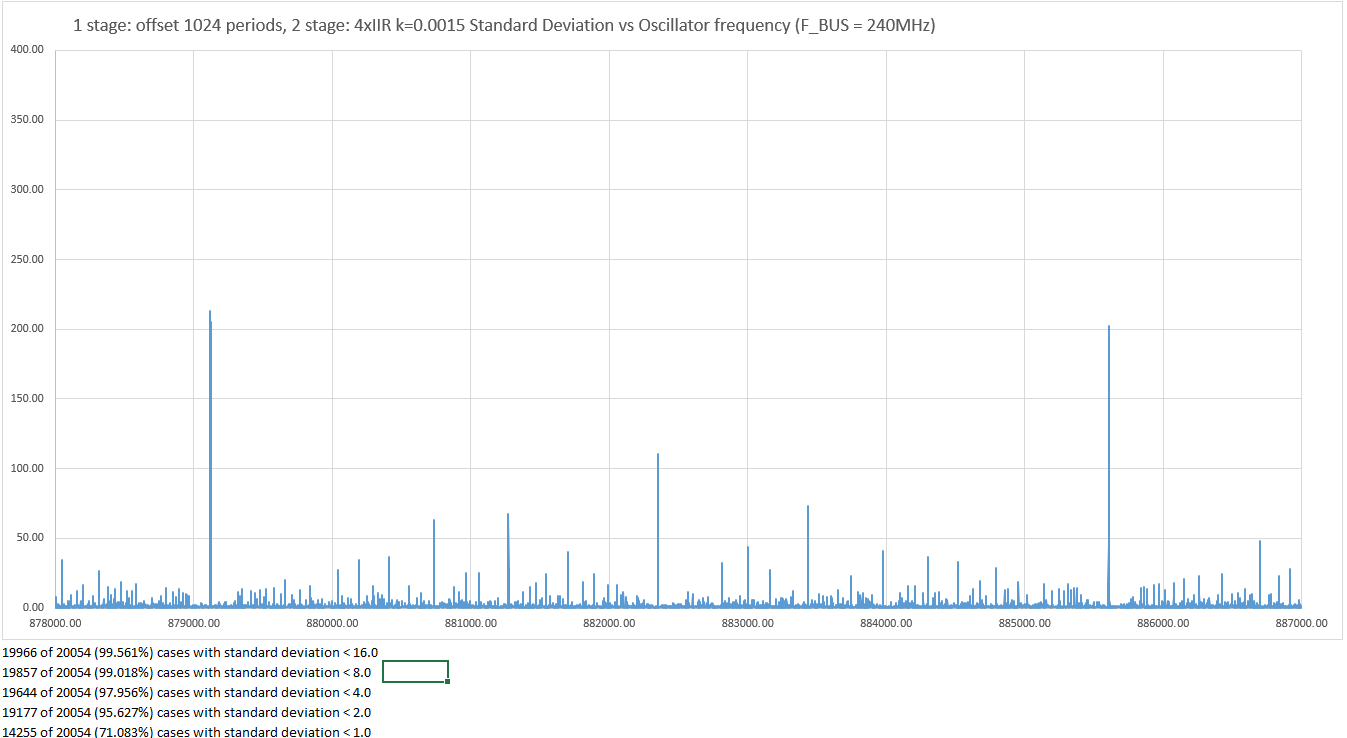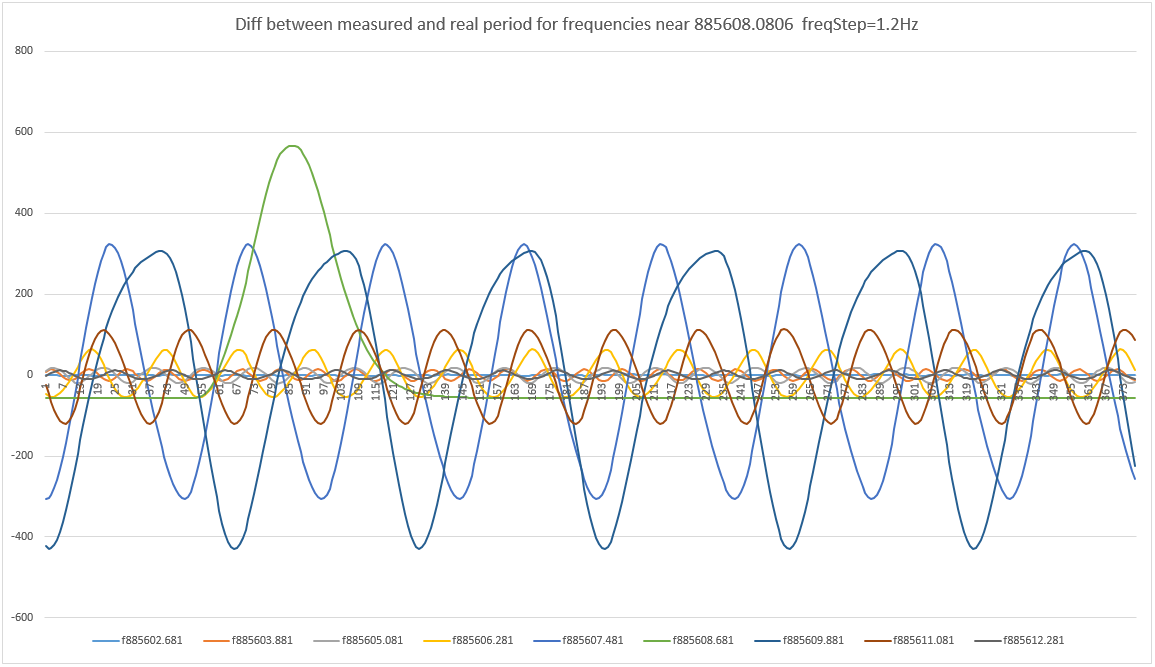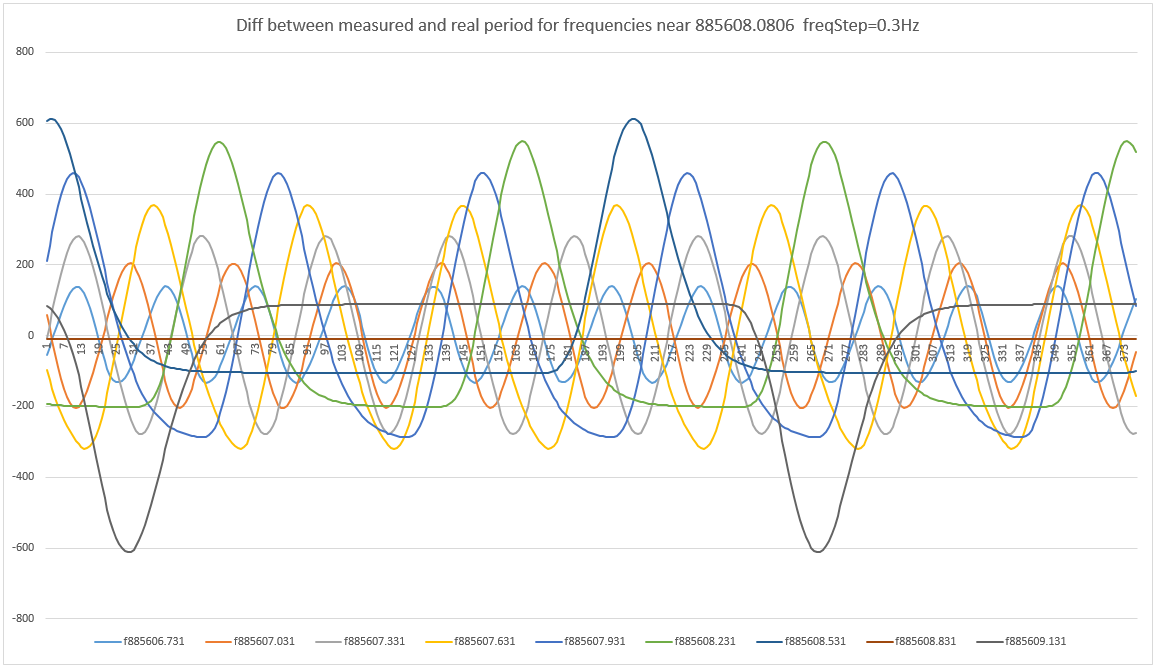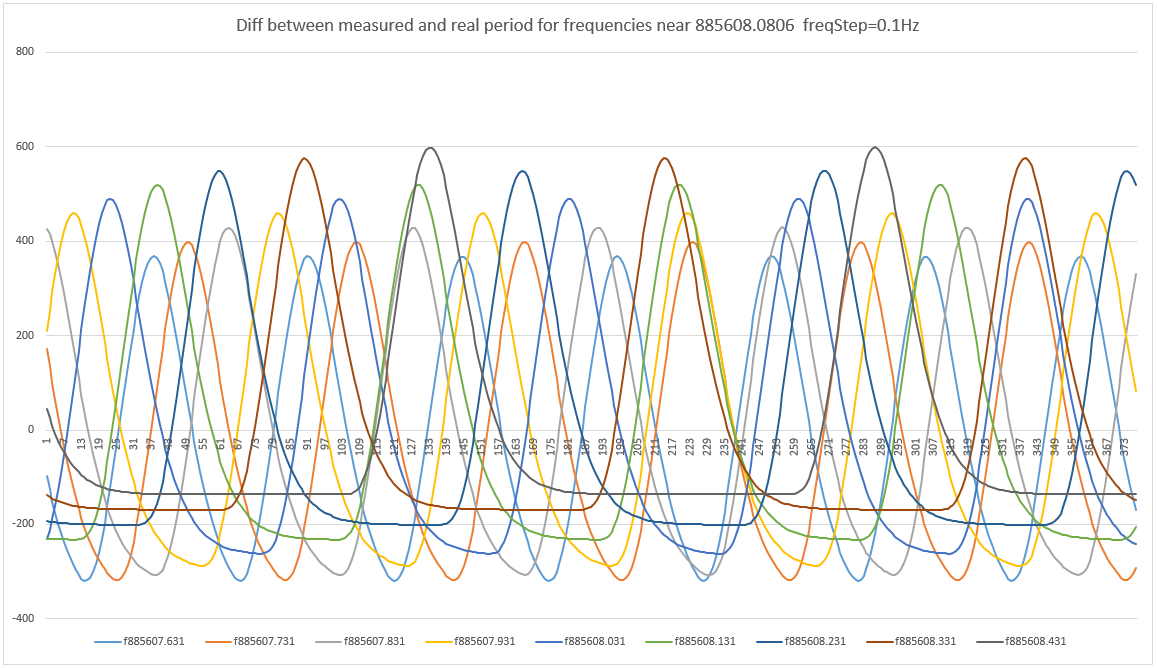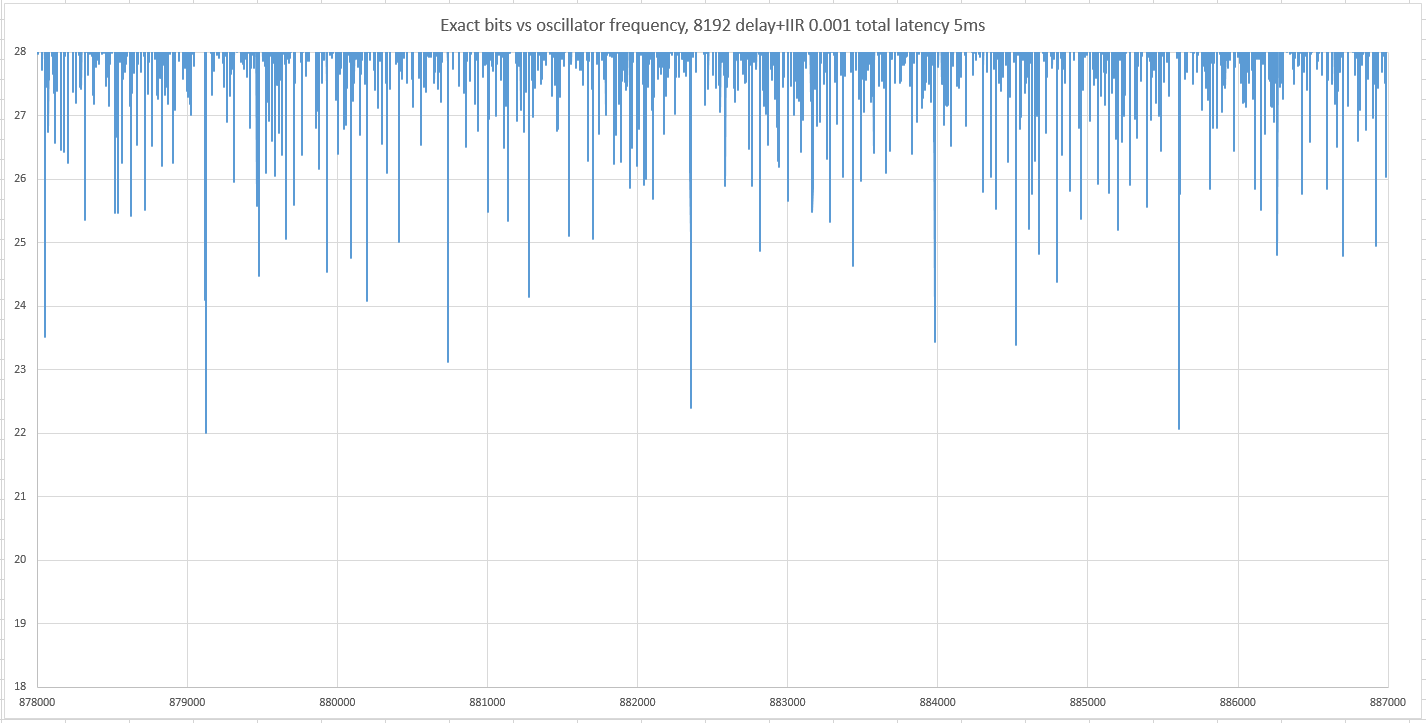"If distance close to antenna falls into such region, it's not a problem at all.
But if unlikely such point corresponds to hand distance far from antenna, it would become unplayable (playable distance will at least drop to 60-70 cm instead of 90-100)." - Buggins
I'm betting you'll find 1.0 m out pretty much moot in terms of anyone wanting / trying to play there. It's a laudable goal, and I can get the D-Lev to respond to pinky movements pretty far away, but it doesn't have any real, practical value as even slight body movements and other environmental "noise" entirely swamp it. Even 0.6 m is way out there on the edge iMO (0.6 m for me is my hand right at my side). Early on, my dream was to play "Somewhere Over the Rainbow" with just my pinky at 1.0 m, and now I see that as more of a gimmick than anything else.
Would the introduction of a bit of dither help break up these points? Perhaps environmental noise will be sufficient here? The D-Lev needs dither to "pave over" sticky spots where the LC period aligns perfectly with some integer multiple of the sampling clock, is that what's happening here?
I'm wondering what would happen if you replaced the running average FIR with IIR? That way the most recent sample is weighted the most, and the filter construct is incredibly compact and fast in SW with minimal memory needs so you can cascade a bunch of them if you like.
Also, there is the matter of mains hum to address at the end of this. Without the variable 4th order IIR and a series of notch filters at the mains fundamental and harmonics, the D-Lev would likely be plagued with hum. All of this requires a somewhat high sampling rate (I do it at the audio rate of 48kHz) and care so that hum and such don't have a chance to substantially alias down into the useful passband of ~100Hz. Hum filtering in the digital domain is THE major thing you can do to clean up the axis numbers. Mine are so clean now that I can see the individual data steps at null.
[EDIT] Also wanted to add, if you can get the thing to be linear right up to the antenna, then this opens up a real playing range for the player that isn't normally there for them on analog Theremins. This means the player can use more of the creamy smooth near-field which responds mainly to the hand, and abandon some of the problematic far-field which unfortunately responds to pretty much anything and everything.


